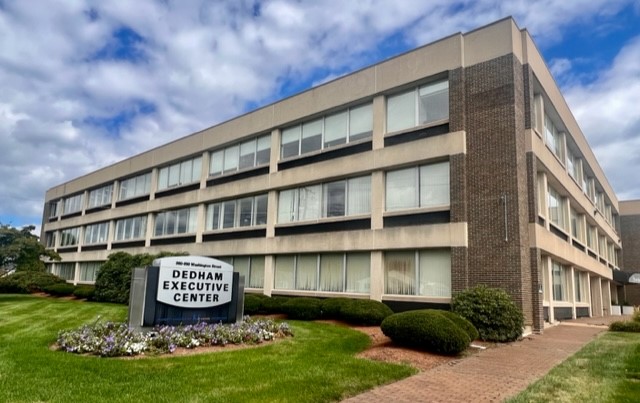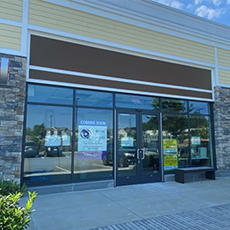Types of Glaucoma
Open-Angle Glaucoma
In cases of open-angle glaucoma, if one were to look at the angle or the drainage system of a patient’s eye, it looks “open.” This is the more common type of chronic glaucoma, where patients generally do not know they have the disease. It is usually diagnosed on routine examination by finding an elevation of intraocular pressure (the pressure within the eye), or by typical appearance of the optic nerve. If your doctor suspects glaucoma, they may ask you to return for Visual Field testing to assess your peripheral vision. You will have a photograph taken of the optic nerve to document its appearance, and also OCT testing to assess the overall health of the optic nerve.
Risk Factors for Open-Angle Glaucoma
The following groups have an increased risk for open-angle glaucoma: males, African-Americans, those with high blood pressure, diabetes, a history of steroid use or trauma, near-sightedness, and a family history of glaucoma. Those with elevated intraocular pressure and thin corneas also have an increased risk for developing glaucoma.
Narrow-Angle Glaucoma
The other broad category of the glaucomas is narrow angle glaucoma. Although open-angle glaucoma is more prevalent in the United States, narrow-angle glaucoma is still quite common. Narrow-angle glaucoma can be further divided into chronic narrow-angle glaucoma and acute angle-closure glaucoma.
The common feature in the narrow-angle glaucomas is the fact that the anterior chamber, or the front of the eye, is quite shallow. This occurs because the iris and the cornea are in close proximity. The junction of the iris and cornea, or the “angle”, is where the eye’s internal fluid normally drains. If this angle closes, the pressure inside the eye can become elevated, resulting in damage to the retinal cells and optic nerve.
Narrow angles can be diagnosed by a test called gonioscopy on a routine eye exam in the ophthalmologist’s office. The eye is given an anesthetic eyedrop and a small contact lens is gently placed on the cornea, allowing the eye doctor to assess the depth of the front of the eye and determine the risk for developing acute or chronic angle closure glaucoma. This is a quick and painless test done at the microscope.
There are other newer types of non-contact and ultrasound methods for determining the depth of the anterior chamber, but it is not yet clear how these tests will ultimately be utilized in the assessment of narrow angles.
If your ophthalmologist finds that you have a sufficient narrowing of the angle that makes it likely the angle will close in the future, he or she will suggest an iridotomy to prevent angle closure. This is a quick and safe out-patient procedure that utilizes a laser to create a very small opening in the iris and allows the angle to stay open.
Following the procedure, your ophthalmologist will prescribe anti-inflammatory drops to be used for a few days. Usually, this procedure will open the angle; however, in some cases, further treatment may be necessary to completely open the angle.
Risk Factors for Narrow-Angle Glaucoma
People at high risk for angle closure glaucoma include Asians and far-sighted people, among other risk groups. The risk increases with advancing age due to enlargement of the lens inside the eye. In a person with a narrow angle, certain medications can potentially start an attack of angle closure glaucoma. These include certain cold medications, antidepressants, scopolamine patches, and eyedrops to dilate the pupils in an eye doctor’s office. Be sure to check any warnings on the package inserts of medications. If you have glaucoma or are at risk, it is a good idea to check with your ophthalmologist whether certain medications pose additional risk.
Acute Angle Closure Glaucoma
In acute angle closure glaucoma, the iris and cornea can suddenly come in contact, resulting in a very rapid rise in eye pressure. This typically occurs in one eye and is usually quite painful, sometimes even inducing nausea and vomiting. People sometimes have an intense ache in and around the eye, and it can be confused for a severe headache. The vision often becomes very blurry, the eye is red, and the pupil often reacts poorly. The classic symptom is seeing halos around lights. The onset of symptoms can sometimes evolve in less than an hour, but often happen over several hours.
Acute angle closure glaucoma is an emergency because prolonged periods of high eye pressures can cause irreversible damage to the optic nerve. You must call your eye doctor immediately if any of these symptoms or signs are present. The initial treatment often includes eyedrops and oral medications to lower the eye pressure. However, the definitive treatment is laser iridotomy. This involves using a laser to make a small opening in the peripheral iris, which usually results in rapid lowering of the pressure.
It is important to treat the other eye in rapid succession, because it is at very high risk of developing the same condition. Typically, the laser treatment is curative, but in some cases, there is irreversible damage to the drainage system of the eye, and eyedrops or even surgery to lower pressure is required.
Chronic Angle Closure Glaucoma
Chronic angle closure glaucoma refers to a condition in which the anterior chamber gradually narrows over a much longer time, sometimes resulting in a gradual rise in eye pressure. On occasion, the slow closure of the angle results in permanent damage to the drainage system of the eye. Often, people have no symptoms, and this is discovered coincidentally on an eye exam. The treatment is also laser iridotomy, but at times, patients may require eyedrops or other treatment to control the glaucoma.
Treatment Options for Glaucoma
Meet Our Team
The Lexington Eye Associates team is led by board-certified doctors considered to be leaders in the field of ophthalmology. Get to know us.
If you have questions or would like to book an appointment, please call (781) 876-2020 request your consultation.














